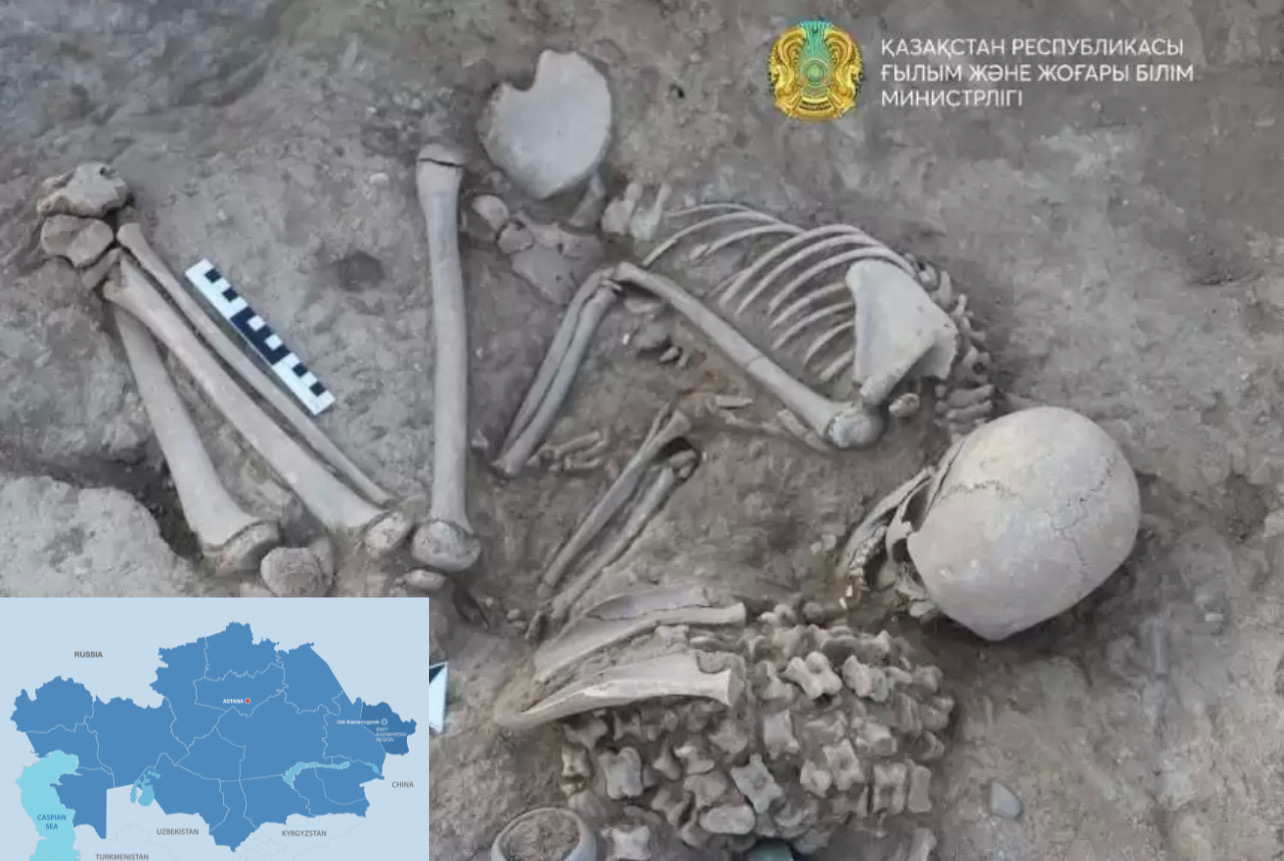ASTANA – Joint archaeological expedition of the Al-Farabi Kazakh National University (KazNU) and Cambridge University specialists found a woman’s burial mound during excavations near the Ainabulak village in the Zaisan district of the East Kazakhstan Region, the Kazakh Ministry of Science and Higher Education reported on Aug. 2.

Photo credit: Kazakh Ministry of Science and Higher Education / Facebook. Click to see the map in full size. The map is designed by The Astana Times.
Next to the mound, the archaeologists found a bronze tip, a hanger, a bronze bowl, 180 asyks (bones of sheep’s knee joint), and a bronze object depicting a frog.
During the fieldwork, the specialists drew up a full topographical plan of the Ainabulak-Temirsu burial ground and explored several burial mounds and three ancient settlements.
The joint expedition took samples of metal objects, bones, and soil inside the graves in the field for further detailed interdisciplinary research at Cambridge laboratories.
Led by the head of KazNU’s Chair of Archaeology, Ethnology, and Museology, Rinat Zhumatayev, the group conducted research on the monuments of the Bronze and Early Iron Ages within a program for developing research work in archaeology initiated by the East Kazakhstan Akimat (administration).


